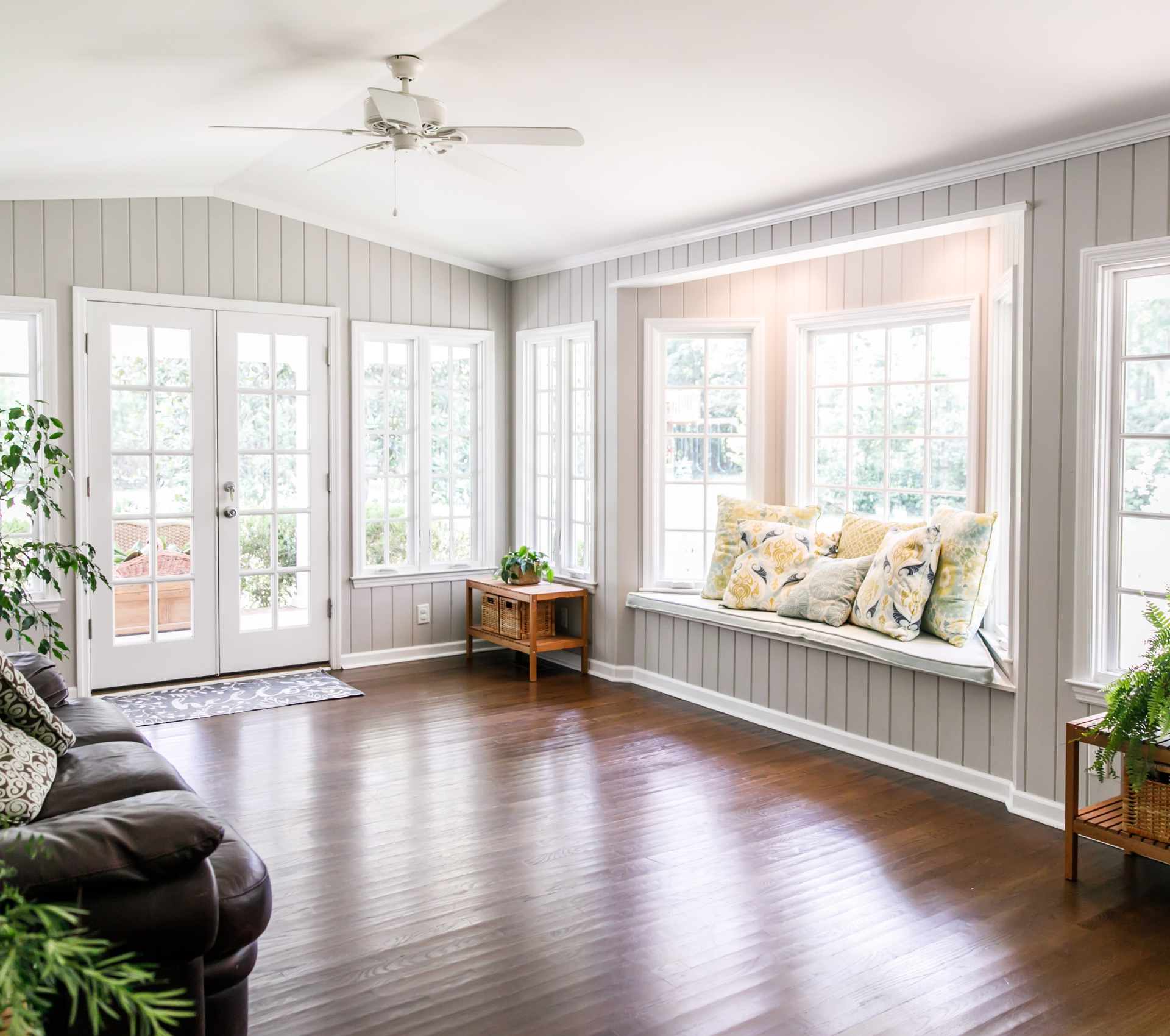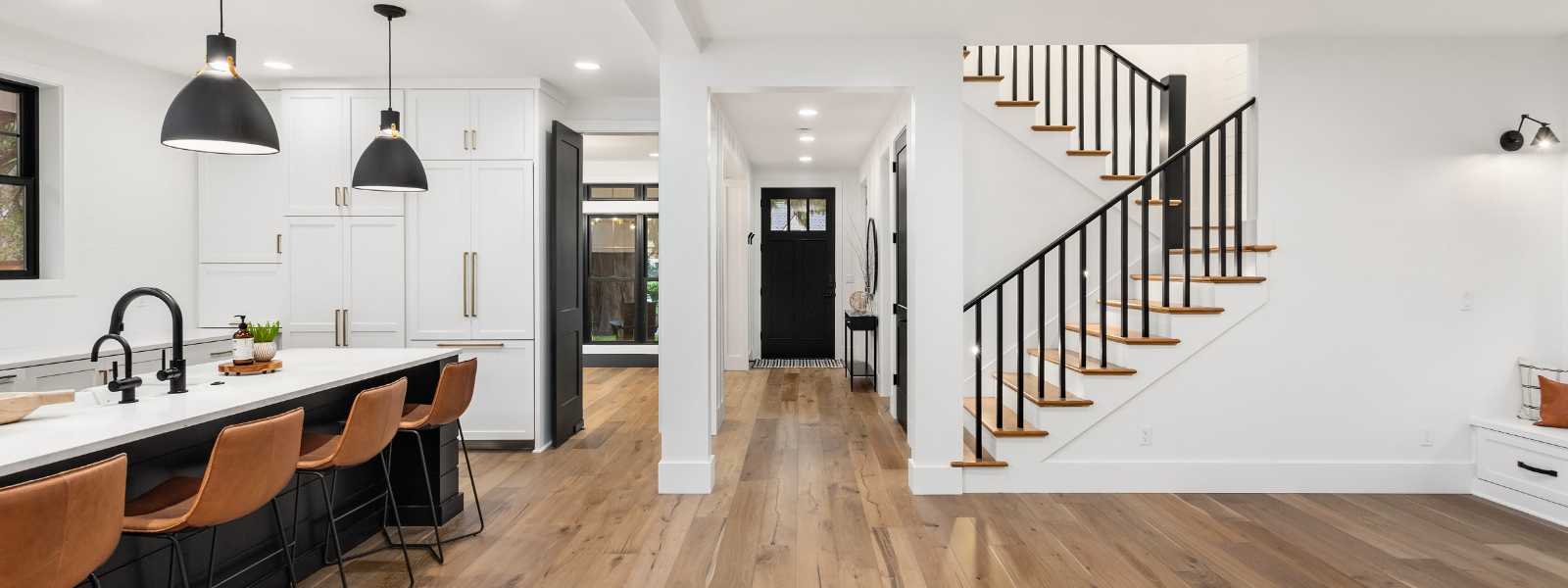Home Remodeling 101: Everything You Need to Know Before You Start
Welcome to Home Remodeling 101! In this comprehensive guide, we will provide you with all the essential information and tips you need to know before you start your home remodeling project. Whether you’re planning to renovate a single room or give your entire home a makeover, this guide will help you navigate through the process with ease.
Embarking on a home remodeling project can be an exciting yet daunting task. It requires careful planning, budgeting, and decision-making. But don’t worry, we’ve got you covered! Our goal is to equip you with the knowledge and tools to make informed choices that will lead to a successful and satisfying renovation.

Before diving into the world of home remodeling, it’s crucial to have a clear understanding of your goals and expectations. Are you looking to increase your home’s value? Create a more functional space? Or simply enhance its aesthetic appeal? By defining your objectives, you can tailor your remodeling project to meet your specific needs.
One of the first steps in any remodeling project is setting a realistic budget. We’ll guide you through the process of determining how much you can afford to spend and how to allocate funds for different aspects of the renovation. We’ll also discuss the importance of choosing the right contractor, understanding permits and regulations, designing your dream space, selecting materials and finishes, managing the construction process, maximizing ROI, considering future needs, and ensuring quality workmanship.
So, whether you’re a first-time remodeler or an experienced DIY enthusiast, this guide will provide you with the knowledge and confidence to tackle your home remodeling project head-on. Let’s get started on creating the home of your dreams!
Setting a Budget
Setting a budget is a crucial step in any home remodeling project. It ensures that you have a clear understanding of your financial limitations and helps you prioritize your expenses. By setting a realistic budget, you can avoid overspending and ensure that you get the most value out of your renovation.
When allocating funds for different aspects of the renovation, it’s important to consider your priorities. Start by identifying the areas of your home that require the most attention or that will have the biggest impact on your daily life. This could be a kitchen remodel, bathroom renovation, or adding an extra room.
Once you have determined your priorities, allocate a portion of your budget to each aspect of the renovation. This could include materials, labor costs, permits, and any unexpected expenses that may arise. It’s important to leave some room in your budget for unforeseen circumstances or changes in plans.
Creating a detailed budget spreadsheet can help you keep track of your expenses and ensure that you stay within your allocated funds. Consider using a table to list each item or area of the renovation and the estimated cost. This will give you a clear overview of your budget and help you make informed decisions throughout the project.
Remember, setting a budget is not just about determining how much you can afford to spend. It’s also about making smart choices and finding ways to maximize the value of your investment. By setting a realistic budget and allocating funds wisely, you can achieve your desired home remodeling goals without breaking the bank.
Choosing the Right Contractor
When it comes to home remodeling, choosing the right contractor is crucial for the success of your project. With so many options out there, it can be overwhelming to make a decision. However, by considering a few key factors, you can ensure that you hire a contractor who is qualified, experienced, and reliable.
Qualifications: One of the first things to look for in a contractor is their qualifications. Make sure they have the necessary licenses and certifications to perform the work you need. This ensures that they have the knowledge and expertise to handle your project.
Experience: Experience is another important factor to consider. Look for a contractor who has worked on similar projects in the past. They will have a better understanding of the challenges that may arise and how to overcome them.
References: Asking for references is a great way to gauge the quality of a contractor’s work. Reach out to their past clients and ask about their experience working with the contractor. Were they satisfied with the results? Did the contractor meet deadlines and stay within budget?
Communication Skills: Effective communication is essential for a successful remodeling project. You want a contractor who is responsive, listens to your ideas, and keeps you informed throughout the process. Good communication ensures that your vision is understood and executed properly.
By considering these key factors, you can choose a contractor who is the right fit for your home remodeling project. Remember to do your research, ask for recommendations, and compare multiple contractors before making a decision. Taking the time to find the right contractor will ultimately save you time, money, and stress in the long run.
Understanding Permits and Regulations
When embarking on a home remodeling project, it is crucial to understand the permits and regulations that may apply to your project. By familiarizing yourself with these requirements, you can ensure compliance with local building codes and avoid potential legal issues.
Permits are legal documents that grant you permission to undertake specific construction or renovation work on your property. These permits are typically issued by local government authorities and are necessary to ensure that your project meets safety and quality standards.
Before starting your home remodeling project, it is essential to research and obtain the necessary permits for the work you plan to undertake. This may include permits for structural changes, electrical or plumbing work, or even minor alterations such as installing new windows or doors.
Additionally, you should familiarize yourself with the regulations that govern home remodeling in your area. These regulations may vary depending on your location and can cover a wide range of aspects, including building setbacks, height restrictions, and environmental considerations.
By understanding permits and regulations, you can ensure that your home remodeling project is carried out in compliance with the law. This not only helps you avoid potential legal issues but also ensures the safety and quality of the work being done.
Designing Your Dream Space
Designing Your Dream Space
Designing your ideal living space is an exciting and creative process that allows you to bring your vision to life. It involves a series of steps, starting from conceptualizing ideas and ending with detailed plans and blueprints. Here is a breakdown of the process:
- Conceptualizing Ideas: Begin by brainstorming and gathering inspiration for your dream space. Look for design ideas in magazines, websites, and social media platforms. Consider your personal style, preferences, and needs to create a vision for your ideal living space.
- Working with Professionals: Collaborating with professionals such as architects or interior designers can greatly enhance the design process. They have the expertise to transform your ideas into practical and aesthetically pleasing designs. Share your vision with them and work together to develop a plan that aligns with your goals.
- Creating Detailed Plans and Blueprints: Once you have finalized the design concept, professionals will create detailed plans and blueprints. These documents outline every aspect of the remodeling project, including structural changes, electrical layouts, and material specifications. They serve as a roadmap for the construction phase.
Remember, designing your dream space requires careful consideration of both functionality and aesthetics. It’s important to strike a balance between creating a space that meets your needs and reflects your personal style. By following this process and working with professionals, you can turn your vision into a reality and create a living space that you truly love.
Materials and Finishes Selection
When it comes to home remodeling, one of the key aspects to consider is the selection of materials and finishes. The right choice can greatly enhance the overall look and feel of your living space. Let’s explore the different types of materials and finishes available for various aspects of your home remodeling project.
Flooring: The flooring you choose can have a significant impact on the aesthetic appeal and functionality of your home. Options such as hardwood, laminate, tile, and carpet offer different advantages and considerations. Hardwood flooring, for example, adds warmth and elegance, while tile flooring is durable and easy to clean.

Countertops: When it comes to countertops, there are various materials to choose from, each with its own unique characteristics. Granite and quartz countertops are popular choices due to their durability and timeless beauty. If you prefer a more budget-friendly option, laminate countertops offer a wide range of colors and patterns.
Cabinetry: The right cabinetry can transform the look of your kitchen or bathroom. Wood cabinets, such as oak or maple, provide a classic and natural appeal, while painted cabinets offer a more modern and sleek look. Consider factors such as durability, storage capacity, and style when selecting cabinetry for your home remodeling project.
Fixtures: From faucets to lighting fixtures, the selection of fixtures can greatly enhance the overall design of your space. Opt for fixtures that complement the style of your home and provide functionality. Consider factors such as water efficiency, ease of use, and durability when choosing fixtures for your home remodeling project.
By carefully considering the materials and finishes for your home remodeling project, you can create a space that not only looks beautiful but also meets your specific needs and preferences. Take the time to explore different options, consult with professionals, and make choices that reflect your personal style and vision.
Managing the Construction Process
Managing the Construction Process
When it comes to home remodeling, managing the construction process is crucial for a successful project. This phase involves various tasks, from scheduling to dealing with unexpected issues. Here are some key insights to help you navigate this stage:
- Scheduling: Creating a realistic schedule is essential to keep the project on track. Work closely with your contractor to establish a timeline that considers all the necessary steps, such as demolition, electrical work, plumbing, and finishing touches.
- Communication with the Contractor: Maintaining open and effective communication with your contractor is vital. Regularly touch base to discuss progress, address any concerns, and make decisions together. This ensures that everyone is on the same page and can help avoid misunderstandings or delays.
- Dealing with Unexpected Issues: Home remodeling projects often come with unexpected challenges. It’s important to be prepared for these surprises and have contingency plans in place. Work closely with your contractor to find solutions and make informed decisions that align with your vision and budget.
During the construction process, it’s also crucial to stay involved and monitor the progress. Regular site visits can help you stay informed and address any concerns promptly. Remember, effective management is key to ensuring that your home remodeling project stays on schedule, within budget, and meets your expectations.
Maximizing ROI
When embarking on a home remodeling project, it’s important to consider how you can maximize the return on your investment (ROI). By implementing strategic choices, you can ensure that your remodeling project not only enhances your living space but also adds value to your home. Here are some strategies to help you maximize your ROI:
- Focusing on high-impact areas: Identify the key areas of your home that have the most impact, such as the kitchen or bathroom. Investing in these areas can significantly increase the value of your home.
- Energy efficiency upgrades: Incorporating energy-efficient features into your remodeling project can not only save you money on utility bills but also attract potential buyers who value sustainability. Consider installing energy-efficient appliances, LED lighting, and efficient insulation.
- Timeless design choices: Opt for design elements that have long-lasting appeal and won’t go out of style quickly. This ensures that your remodeling project remains attractive and desirable for years to come, increasing its value in the real estate market.
By focusing on these strategies, you can ensure that your home remodeling project not only meets your immediate needs but also provides a solid return on your investment. Remember to carefully plan and budget for your project, considering both short-term and long-term value. With the right choices and careful execution, you can create a beautiful and functional living space that adds significant value to your home.
Considering Future Needs
When embarking on a home remodeling project, it is important to not only focus on your current needs but also consider the future. By future-proofing your renovation, you can ensure that your home will continue to meet your family’s changing needs for years to come.
One aspect to consider is accommodating aging in place. As we age, our mobility and accessibility requirements may change. It is wise to incorporate features that can make your home more accessible and comfortable as you grow older. This may include installing grab bars in the bathroom, widening doorways to accommodate wheelchairs, or creating a bedroom on the ground floor to avoid climbing stairs.
Another consideration is creating flexible spaces for different purposes. As your family evolves, your needs for each room may change. By designing versatile spaces, you can easily adapt them to serve different functions. For example, a home office can be transformed into a nursery or a guest room. Built-in storage solutions can also help maximize space and allow for easy reconfiguration.
By considering your family’s changing needs and incorporating these elements into your home remodeling project, you can future-proof your home and ensure that it remains functional and comfortable for years to come.
Ensuring Quality Workmanship
Ensuring quality workmanship is crucial for a successful home remodeling project. By following a few key steps, you can ensure that the work is done to a high standard and meets your expectations.
The first step is to conduct regular inspections throughout the construction process. This allows you to identify any issues or concerns early on and address them promptly. Inspections can be done at various stages of the project, such as after each major milestone or before important installations. By closely monitoring the progress and quality of the work, you can catch any potential problems before they become bigger issues.

Addressing concerns promptly is another important aspect of ensuring quality workmanship. If you notice any issues or have any concerns, it’s crucial to communicate them to the contractor as soon as possible. This allows them to take corrective action and make necessary adjustments before moving forward. Open and transparent communication with the contractor is key to resolving any issues and ensuring that the work meets your standards.
In addition to inspections and addressing concerns, maintaining open communication with the contractor throughout the project is essential. Regularly discussing progress, timelines, and any changes or updates can help ensure that everyone is on the same page. It also allows you to provide feedback and make adjustments along the way, ensuring that the work is done to your satisfaction.
By conducting inspections, addressing concerns promptly, and maintaining open communication with the contractor, you can ensure the quality of workmanship in your home remodeling project. This attention to detail and proactive approach will help you achieve the desired results and create a space that you can enjoy for years to come.
Frequently Asked Questions
- What factors should I consider when setting a budget for my home remodeling project?When setting a budget for your home remodeling project, it’s important to consider factors such as the scope of the project, the materials and finishes you desire, and any additional costs for permits or professional services. It’s also crucial to allocate funds for unexpected expenses that may arise during the renovation process.
- How do I choose the right contractor for my home remodeling project?Choosing the right contractor involves considering their qualifications, experience, and references. Look for contractors who specialize in the type of remodeling you require and have a proven track record of successful projects. Additionally, assess their communication skills and ensure they understand your vision for the renovation.
- What permits and regulations do I need to be aware of for my home remodeling project?Permits and regulations vary depending on your location and the specific nature of your remodeling project. It is essential to research and understand the local building codes and obtain any necessary permits before starting the renovation. This ensures compliance with regulations and helps avoid potential legal issues in the future.
- How can I effectively manage the construction process of my home remodeling project?To manage the construction process effectively, establish clear communication channels with your contractor and regularly discuss progress and any concerns. Create a detailed schedule and monitor the project’s timeline closely. Be prepared for unexpected issues and address them promptly to minimize delays.
- What are some strategies for maximizing the return on investment (ROI) of my home remodeling project?To maximize ROI, focus on high-impact areas that add value to your home, such as kitchen and bathroom renovations. Consider energy-efficient upgrades that can lead to long-term savings. Opt for timeless design choices that appeal to a wide range of potential buyers if you plan to sell your home in the future.
- How can I ensure the quality of workmanship in my home remodeling project?To ensure quality workmanship, conduct regular inspections during the construction process and address any concerns promptly with your contractor. Maintain open and transparent communication to address any issues that may arise. It’s also recommended to hire licensed and insured professionals for different aspects of the remodeling project.